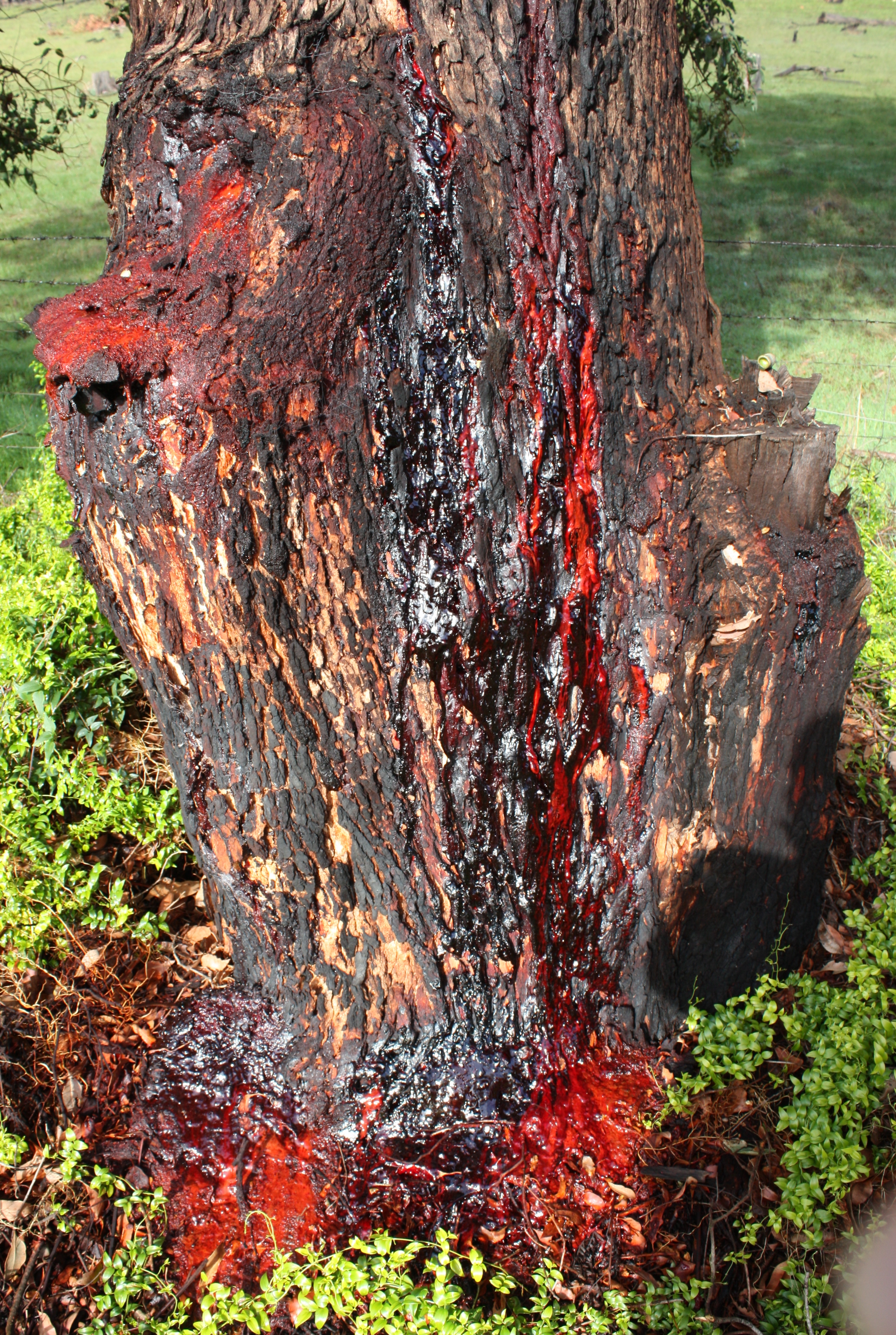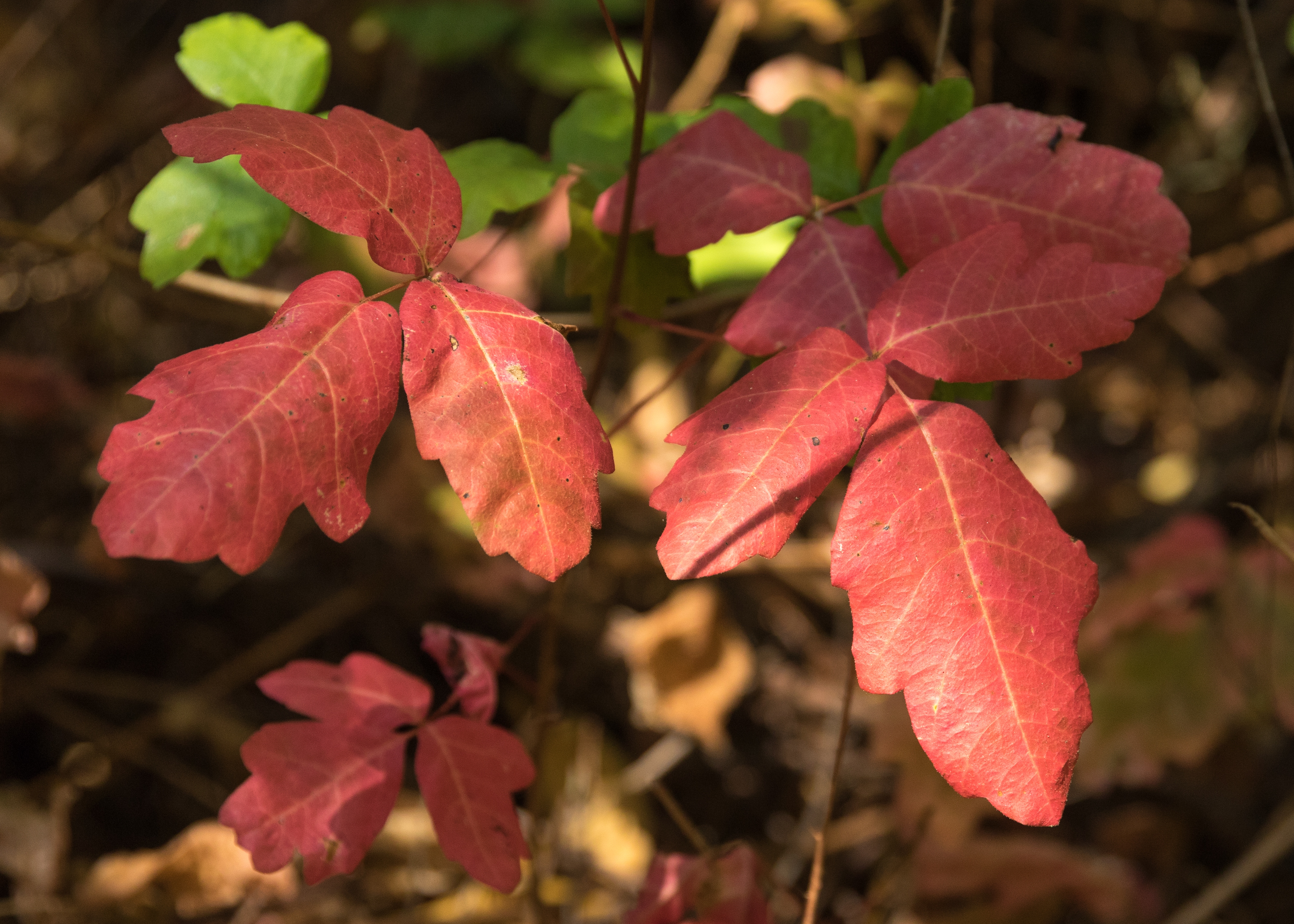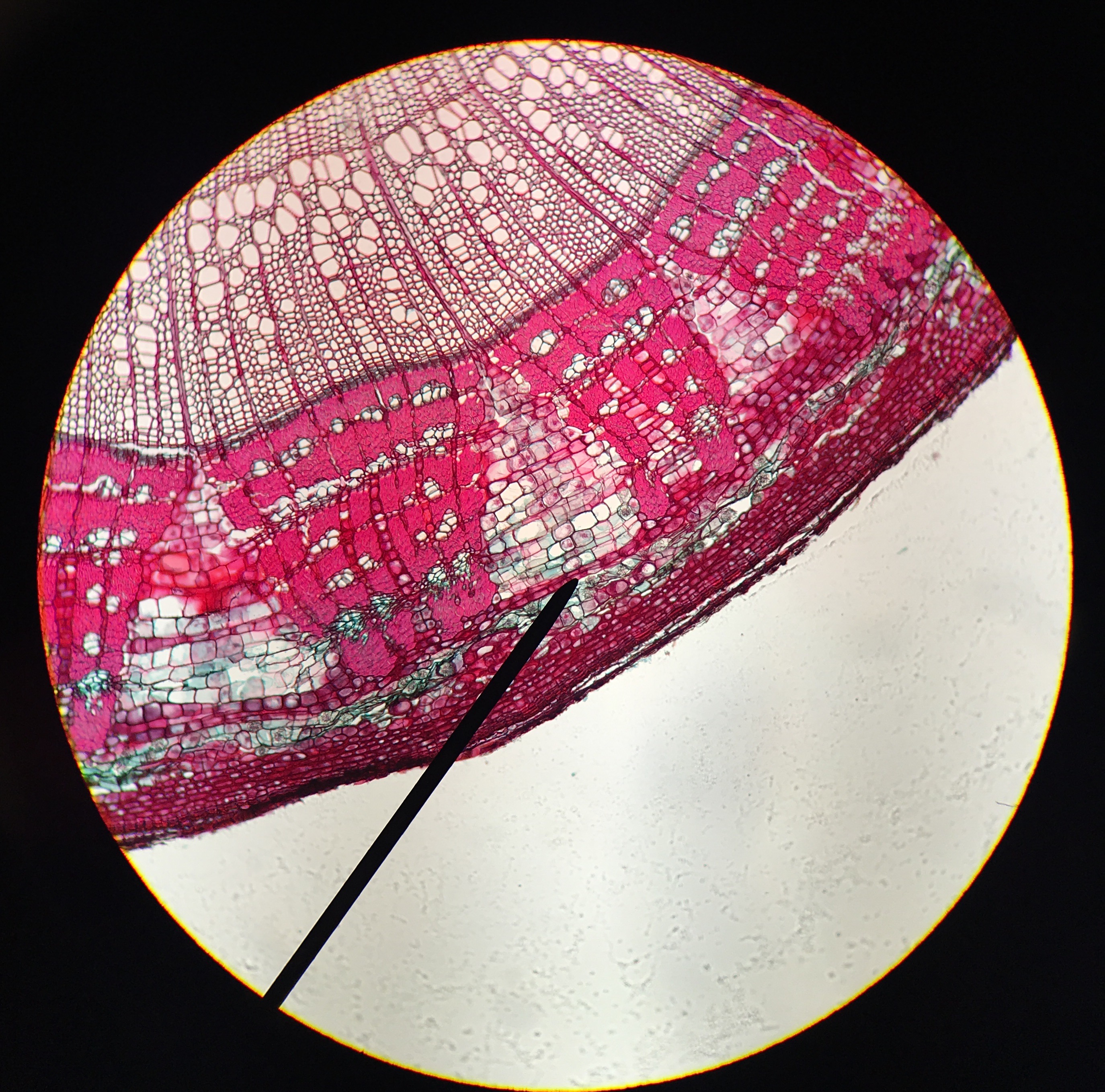|
Gum (botany)
Gum is a sap or other resinous material associated with certain species of the plant kingdom. This material is often polysaccharide-based and is most frequently associated with woody plants, particularly under the bark or as a seed coating. The polysaccharide material is typically of high molecular weight and most often highly hydrophilic or hydrocolloidal. As seed coating Many gums occur as seed coatings for plant species; the adaptive purpose of some of these gummy coatings is to delay germination of certain flora seeds. An example of such a gummy coating occurs in the case of Western poison oak, a widespread shrub in western North America. See also * Cambium * Gummosis * Latex * Natural gum Natural gums are polysaccharides of natural origin, capable of causing a large increase in a solution's viscosity, even at small concentrations. They are mostly botanical gums, found in the woody elements of plants or in seed coatings. Human u ... Line notes * Plant physiology ... [...More Info...] [...Related Items...] OR: [Wikipedia] [Google] [Baidu] |
Corymbia Calophylla Kino
''Corymbia'', commonly known as bloodwoods, is a genus of about one hundred species of tree that, along with ''Eucalyptus'', ''Angophora'' and several smaller groups, are referred to as eucalypts. Until 1990, corymbias were included in the genus ''Eucalyptus'' and there is still considerable disagreement among botanists as to whether separating them is valid. As of January 2020, ''Corymbia'' is an accepted name at the Australian Plant Census. Description Eucalypts in the genus ''Corymbia'' are trees, sometimes Mallee (habit), mallee-like, that either have rough, fibrous or flaky bark, or smooth bark that is shed in small flakes or short strips. Young plants and coppice regrowth have leaves that differ from adult leaves. The adult leaves are arranged alternately (strictly disjunct opposite, but appearing alternate), with oil glands. The flower buds are arranged in groups on a branching Peduncle (botany), peduncle, each branch usually with seven buds, but with the Pedicel (botany) ... [...More Info...] [...Related Items...] OR: [Wikipedia] [Google] [Baidu] |
Resin
In polymer chemistry and materials science, resin is a solid or highly viscous substance of plant or synthetic origin that is typically convertible into polymers. Resins are usually mixtures of organic compounds. This article focuses on naturally occurring resins. Plants secrete resins for their protective benefits in response to injury. The resin protects the plant from insects and pathogens. Resins confound a wide range of herbivores, insects, and pathogens, while the volatile phenolic compounds may attract benefactors such as parasitoids or predators of the herbivores that attack the plant. Composition Most plant resins are composed of terpenes. Specific components are alpha-pinene, beta-pinene, delta-3 carene, and sabinene, the monocyclic terpenes limonene and terpinolene, and smaller amounts of the tricyclic sesquiterpenes, longifolene, caryophyllene, and delta-cadinene. Some resins also contain a high proportion of resin acids. Rosins on the other hand are less ... [...More Info...] [...Related Items...] OR: [Wikipedia] [Google] [Baidu] |
Plant Kingdom
Plants are predominantly photosynthetic eukaryotes of the kingdom Plantae. Historically, the plant kingdom encompassed all living things that were not animals, and included algae and fungi; however, all current definitions of Plantae exclude the fungi and some algae, as well as the prokaryotes (the archaea and bacteria). By one definition, plants form the clade Viridiplantae (Latin name for "green plants") which is sister of the Glaucophyta, and consists of the green algae and Embryophyta (land plants). The latter includes the flowering plants, conifers and other gymnosperms, ferns and their allies, hornworts, liverworts, and mosses. Most plants are multicellular organisms. Green plants obtain most of their energy from sunlight via photosynthesis by primary chloroplasts that are derived from endosymbiosis with cyanobacteria. Their chloroplasts contain chlorophylls a and b, which gives them their green color. Some plants are parasitic or mycotrophic and have lost the ability ... [...More Info...] [...Related Items...] OR: [Wikipedia] [Google] [Baidu] |
Polysaccharide
Polysaccharides (), or polycarbohydrates, are the most abundant carbohydrates found in food. They are long chain polymeric carbohydrates composed of monosaccharide units bound together by glycosidic linkages. This carbohydrate can react with water (hydrolysis) using amylase enzymes as catalyst, which produces constituent sugars (monosaccharides, or oligosaccharides). They range in structure from linear to highly branched. Examples include storage polysaccharides such as starch, glycogen and galactogen and structural polysaccharides such as cellulose and chitin. Polysaccharides are often quite heterogeneous, containing slight modifications of the repeating unit. Depending on the structure, these macromolecules can have distinct properties from their monosaccharide building blocks. They may be amorphous or even insoluble in water. When all the monosaccharides in a polysaccharide are the same type, the polysaccharide is called a homopolysaccharide or homoglycan, but when more t ... [...More Info...] [...Related Items...] OR: [Wikipedia] [Google] [Baidu] |
Woody Plant
A woody plant is a plant that produces wood as its structural tissue and thus has a hard stem. In cold climates, woody plants further survive winter or dry season above ground, as opposite to herbaceous plants that die back to the ground until spring. Characteristics Woody plants are usually either trees, shrubs, or lianas. These are usually perennial plants whose stems and larger roots are reinforced with wood produced from secondary xylem. The main stem, larger branches, and roots of these plants are usually covered by a layer of bark. Wood is a structural tissue that allows woody plants to grow from above ground stems year after year, thus making some woody plants the largest and tallest terrestrial plants. Woody plants, like herbaceous perennials, typically have a dormant period of the year when growth does not take place, in colder climates due to freezing temperatures and lack of daylight during the winter months, in subtropical and tropical climates due to the dry sea ... [...More Info...] [...Related Items...] OR: [Wikipedia] [Google] [Baidu] |
Molecular Weight
A molecule is a group of two or more atoms held together by attractive forces known as chemical bonds; depending on context, the term may or may not include ions which satisfy this criterion. In quantum physics, organic chemistry, and biochemistry, the distinction from ions is dropped and ''molecule'' is often used when referring to polyatomic ions. A molecule may be homonuclear, that is, it consists of atoms of one chemical element, e.g. two atoms in the oxygen molecule (O2); or it may be heteronuclear, a chemical compound composed of more than one element, e.g. water (two hydrogen atoms and one oxygen atom; H2O). In the kinetic theory of gases, the term ''molecule'' is often used for any gaseous particle regardless of its composition. This relaxes the requirement that a molecule contains two or more atoms, since the noble gases are individual atoms. Atoms and complexes connected by non-covalent interactions, such as hydrogen bonds or ionic bonds, are typically not consi ... [...More Info...] [...Related Items...] OR: [Wikipedia] [Google] [Baidu] |
Hydrophilic
A hydrophile is a molecule or other molecular entity that is attracted to water molecules and tends to be dissolved by water.Liddell, H.G. & Scott, R. (1940). ''A Greek-English Lexicon'' Oxford: Clarendon Press. In contrast, hydrophobes are not attracted to water and may seem to be repelled by it. Hygroscopics ''are'' attracted to water, but are not dissolved by water. Molecules A hydrophilic molecule or portion of a molecule is one whose interactions with water and other polar substances are more thermodynamically favorable than their interactions with oil or other hydrophobic solvents. They are typically charge-polarized and capable of hydrogen bonding. This makes these molecules soluble not only in water but also in other polar solvents. Hydrophilic molecules (and portions of molecules) can be contrasted with hydrophobic molecules (and portions of molecules). In some cases, both hydrophilic and hydrophobic properties occur in a single molecule. An example of these amphiph ... [...More Info...] [...Related Items...] OR: [Wikipedia] [Google] [Baidu] |
Colloid
A colloid is a mixture in which one substance consisting of microscopically dispersed insoluble particles is suspended throughout another substance. Some definitions specify that the particles must be dispersed in a liquid, while others extend the definition to include substances like aerosols and gels. The term colloidal suspension refers unambiguously to the overall mixture (although a narrower sense of the word ''suspension'' is distinguished from colloids by larger particle size). A colloid has a dispersed phase (the suspended particles) and a continuous phase (the medium of suspension). The dispersed phase particles have a diameter of approximately 1 nanometre to 1 micrometre. Some colloids are translucent because of the Tyndall effect, which is the scattering of light by particles in the colloid. Other colloids may be opaque or have a slight color. Colloidal suspensions are the subject of interface and colloid science. This field of study was introduced in 1845 by Itali ... [...More Info...] [...Related Items...] OR: [Wikipedia] [Google] [Baidu] |
Adaptation
In biology, adaptation has three related meanings. Firstly, it is the dynamic evolutionary process of natural selection that fits organisms to their environment, enhancing their evolutionary fitness. Secondly, it is a state reached by the population during that process. Thirdly, it is a phenotypic trait or adaptive trait, with a functional role in each individual organism, that is maintained and has evolved through natural selection. Historically, adaptation has been described from the time of the ancient Greek philosophers such as Empedocles and Aristotle. In 18th and 19th century natural theology, adaptation was taken as evidence for the existence of a deity. Charles Darwin proposed instead that it was explained by natural selection. Adaptation is related to biological fitness, which governs the rate of evolution as measured by change in allele frequencies. Often, two or more species co-adapt and co-evolve as they develop adaptations that interlock with those of the oth ... [...More Info...] [...Related Items...] OR: [Wikipedia] [Google] [Baidu] |
Germination
Germination is the process by which an organism grows from a seed or spore. The term is applied to the sprouting of a seedling from a seed of an angiosperm or gymnosperm, the growth of a sporeling from a spore, such as the spores of fungi, ferns, bacteria, and the growth of the pollen tube from the pollen grain of a seed plant. Seed plants Germination is usually the growth of a plant contained within a seed; it results in the formation of the seedling. It is also the process of reactivation of metabolic machinery of the seed resulting in the emergence of radicle and plumule. The seed of a vascular plant is a small package produced in a fruit or cone after the union of male and female reproductive cells. All fully developed seeds contain an embryo and, in most plant species some store of food reserves, wrapped in a seed coat. Some plants produce varying numbers of seeds that lack embryos; these are empty seeds which never germinate. Dormant seeds are viable seeds that do ... [...More Info...] [...Related Items...] OR: [Wikipedia] [Google] [Baidu] |
Western Poison Oak
''Toxicodendron diversilobum'' (syn. ''Rhus diversiloba''), commonly named Pacific poison oak or western poison oak, is a woody vine or shrub in the sumac family, Anacardiaceae. It is widely distributed in western North America, inhabiting conifer and mixed broadleaf forests, woodlands, grasslands, and chaparral biomes.C. Michael Hogan (2008)"Western poison-oak: ''Toxicodendron diversilobum''", GlobalTwitcher, ed. Nicklas Strömberg Peak flowering occurs in May. Like other members of the genus ''Toxicodendron'', ''T. diversilobum'' causes itching and allergic rashes in most people after contact by touch or smoke inhalation. Despite its name, it is not closely related to oaks. Description ''Toxicodendron diversilobum'' is extremely variable in growth habit and leaf appearance. It grows as a dense tall shrub in open sunlight, a treelike vine and may be more than long with an trunk, as dense thickets in shaded areas, or any form in between. It reproduces by spreading rhiz ... [...More Info...] [...Related Items...] OR: [Wikipedia] [Google] [Baidu] |
Cambium
A cambium (plural cambia or cambiums), in plants, is a tissue layer that provides partially undifferentiated cells for plant growth. It is found in the area between xylem and phloem. A cambium can also be defined as a cellular plant tissue from which phloem, xylem, or cork grows by division, resulting (in woody plants) in secondary thickening. It forms parallel rows of cells, which result in secondary tissues. There are several distinct kinds of cambium found in plant stems and roots: * Cork cambium, a tissue found in many vascular plants as part of the periderm. * Unifacial cambium, which ultimately produces cells to the interior of its cylinder. * Vascular cambium, a lateral meristem in the vascular tissue of plants. Uses The cambium of many species of woody plants are edible; however, due to its vital role in the homeostasis and growth of woody plants, this may result in death of the plant if enough cambium is removed at once. The cambium can generally be eaten raw or cooke ... [...More Info...] [...Related Items...] OR: [Wikipedia] [Google] [Baidu] |


.jpg)







